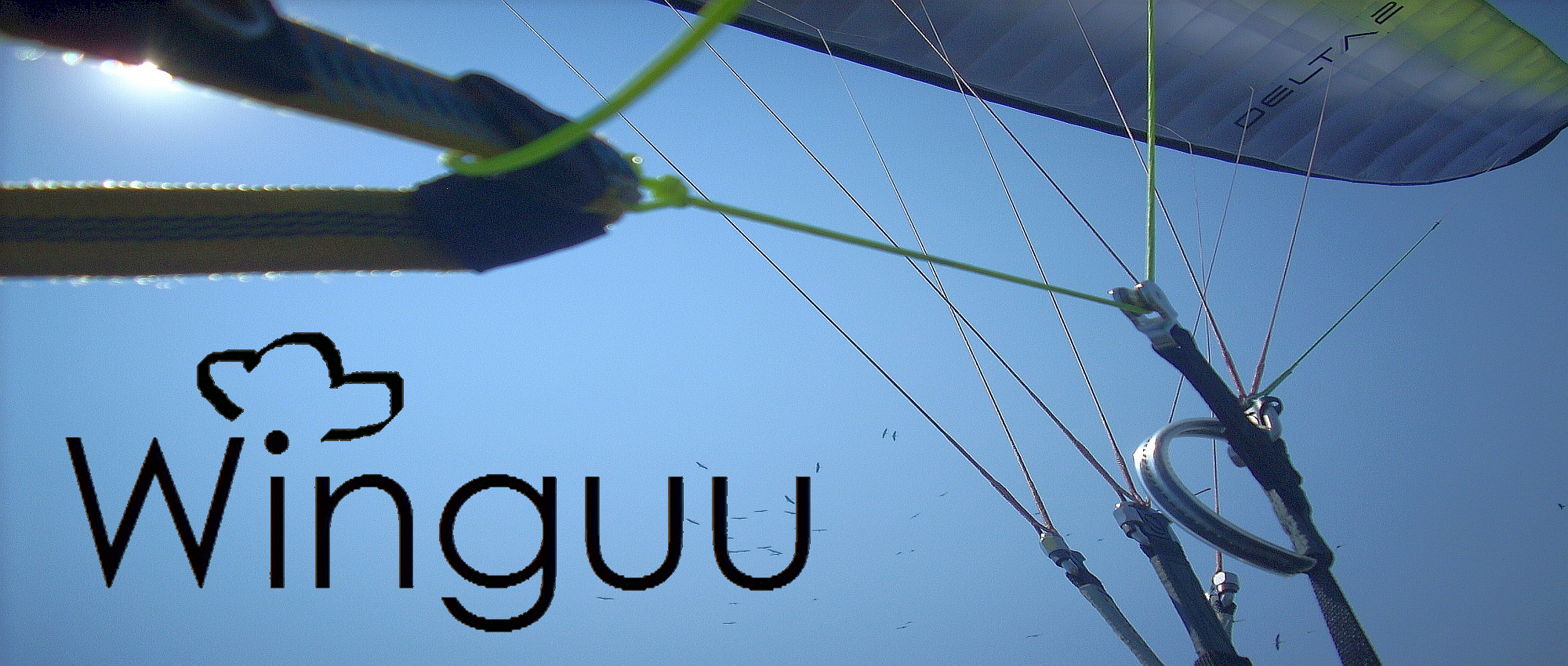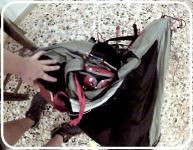Here is some important & useful knowledge based on Frequently Asked Questions about reserve rescue parachutes in paragilding!
Q: What are the certification principals for rescue parachutes in paragliding?
A: The certification of reserve parachutes is based on the examination in certain factors of working order:
- the time it takes to open
- the resistance to the aperture shock during the moments of opening
- the oscillations (directional movements of the parachute after deployment)
- the sink rate on descent that is average to 5,5 meters / second
Q: What are event situations in paragliding where pilots should deploy the reserve rescue parachute?
A: To deploy the reserve parachute is considered best first response in the following event occurrences:
- the situation where your paraglider is ruptured in the air
- the situation of a collision with another pilot in the air
- the situation of a collapse of your glider in very close proximity to the ground or mountain side
- a situation that is clearly irreversible
Q: Is there an altitude limit on rescue parachute reserve deployment in paragliding?
A: There is no unpermissable altitude in flight for the deployment of the reserve rescue parachute. If you are in an irreversible situation then deploy your reserve anyway.
Here is some experiential advice for pilots..
..Ιn reference to the altitude you find yourself at the moment of the flight incident:
If you are at a 1.000 meters (3.300 ft) of altitude, it is considered best to try and manage the situation first.
The idea is to avoid the re-inflation of your paraglider after the use of the reserve that could potentially cause more incontrollable “damage”.
If you are at 200 to 300 meters (650 to 1000 ft) of altitude, it is thought to be yet fairly high.
Keep in mind you may be wrong in judging the actual altitude.
In the occurrence of an incident at 50 meters (less than 200ft) of altitude, the altitude is quite low and less favourable.
..Ιn reference to the descent directional forces:
If it is a parachute-type fall, try and manage your paraglider since when you release the commands in order to reach for the rescue handle the glider may return into flight.
In any other rotation-type fall, with or without an angle (sat type), the best reaction should be to deploy your reserve anyhow.
Q: What is the rescue parachute deployment action command in paragliding?
A: A call to action, parachutist command known as ” Look, Reach, Pull “ is an initial thought processing order to follow a paragliding pilot’s decision to deploy their reserve rescue parachute.
The command aims to reinforce a pilot’s effective response by imprinting the process where you visually see the handle of the reserve, reach for it and pull to release the rescue from the harness or front container.
Depending on the particular conditions you are experiencing, the action to follow may be:
In a parachute type fall – you bring back and place force to throw the rescue away, not letting it drop.
In a strong rotation fall – you directly throw the rescue away without bringing it back.
In a sat-like rotation fall – you throw the reserve towards the direction following the trailing edge of your glider as to avoid the rescue falling into the glider as it rotates.
After the rescue parachute has opened, the pilot’s aim is to set under control and or “deactivate” the main glider.
*If your reserve is installed in your harness, practise reaching the handle so you may be sure that in a state of alarm you will be able to go for it easier.
*The rescue release deployment method should not require any special technique as due to stress your reactions will be swift and must be kept simple.
Q: What is the suitable size rescue parachute for your reserve in paragliding?
A: Always opt to meet the average medium of the weight indication for the rescue parachute, compatible to the sum of your actual weight and complete gear including the paraglider.
A tendency to choose a bigger rather than average size rescue parachute has some yet insignificant difference that is translated for some in lower sink rate and further in added oscillations and/or added time to open, consequent to more material subjected to friction drag relative to weight.
Q: What are best practices for pilots to ensure functionality of your reserve rescue parachute in paragliding?
A: Check your reserve often, check the reserve handle is in place and the pins are not loose fitted and further in place.
For tandem flying it is strongly recommended that the pilot checks the handle and pins before each take off.
Finally it is most important, more than anything else, to maintain your reserve rescue parachute with service repacks and care!
- Do not leave your paragliding harness or front container in the sun.
- Do not pack away your paragliding harness or front container straight after long exposure to the sun and heat, alternatively you can leave a rucksack opening for air to circulate and damp the heat.
- Avoid sitting on the ground resting in your harness, when the reserve rescue is fitted in the harness.
- You can check and remove any grass, sand or dirt from the velcro fittings.
Q: When should I check the maintenance of my reserve rescue parachute in paragliding and how often does it need to be re-packed?
A: On average the rule is between 12 to 24 months or 1 to 2 years when the rescue should go through a check service process, to be opened in a controlled enviroment where materials are checked and then repacked according to specific designer instructions.
All reserve rescues circulating and used by pilots in paragliding come from the manufacturers with the notice of Read the Manual Before Use.
Among the information contained in the Manual, is a guidance to intervals between checking and repacking the reserve during it’s lifetime.
This information on intervals may exist also on the Label of the rescue parachute which is found on it’s riser.
By evidence and due to the differences in factors such as climate, flying consistency, type of flying (ex. XC, beach flying, acro, tandem, seasonal flying) and storage facilities each pilot has, it is safe practise to check your reserve rescue at times separating seasons.
For a better understanding of care for materials in reserve rescue parachutes
continue reading more in this article link.
Here is some important & useful knowledge based on Frequently Asked Questions about reserve rescue parachutes in paragilding!
Q: What are the certification principals for rescue parachutes in paragliding?
A: The certification of reserve parachutes is based on the examination in certain factors of working order:
- the time it takes to open
- the resistance to the aperture shock during the moments of opening
- the oscillations (directional movements of the parachute after deployment)
- the sink rate on descent that is average to 5,5 meters / second
Q: What are event situations in paragliding where pilots should deploy the reserve rescue parachute?
A: To deploy the reserve parachute is considered best first response in the following event occurrences:
- the situation where your paraglider is ruptured in the air
- the situation of a collision with another pilot in the air
- the situation of a collapse of your glider in very close proximity to the ground or mountain side
- a situation that is clearly irreversible
Q: Is there an altitude limit on rescue parachute reserve deployment in paragliding?
A: There is no unpermissable altitude in flight for the deployment of the reserve rescue parachute. If you are in an irreversible situation then deploy your reserve anyway.
Here is some experiential advice for pilots..
..Ιn reference to the altitude you find yourself at the moment of the flight incident:
If you are at a 1.000 meters (3.300 ft) of altitude, it is considered best to try and manage the situation first.
The idea is to avoid the re-inflation of your paraglider after the use of the reserve that could potentially cause more incontrollable “damage”.
If you are at 200 to 300 meters (650 to 1000 ft) of altitude, it is thought to be yet fairly high.
Keep in mind you may be wrong in judging the actual altitude.
In the occurrence of an incident at 50 meters (less than 200ft) of altitude, the altitude is quite low and less favourable.
..Ιn reference to the descent directional forces:
If it is a parachute-type fall, try and manage your paraglider since when you release the commands in order to reach for the rescue handle the glider may return into flight.
In any other rotation-type fall, with or without an angle (sat type), the best reaction should be to deploy your reserve anyhow.
Q: What is the rescue parachute deployment action command in paragliding?
A: A call to action, parachutist command known as ” Look, Reach, Pull “ is an initial thought processing order to follow a paragliding pilot’s decision to deploy their reserve rescue parachute.
The command aims to reinforce a pilot’s effective response by imprinting the process where you visually see the handle of the reserve, reach for it and pull to release the rescue from the harness or front container.
Depending on the particular conditions you are experiencing, the action to follow may be:
In a parachute type fall – you bring back and place force to throw the rescue away, not letting it drop.
In a strong rotation fall – you directly throw the rescue away without bringing it back.
In a sat-like rotation fall – you throw the reserve towards the direction following the trailing edge of your glider as to avoid the rescue falling into the glider as it rotates.
After the rescue parachute has opened, the pilot’s aim is to set under control and or “deactivate” the main glider.
*If your reserve is installed in your harness, practise reaching the handle so you may be sure that in a state of alarm you will be able to go for it easier.
*The rescue release deployment method should not require any special technique as due to stress your reactions will be swift and must be kept simple.
Q: What is the suitable size rescue parachute for your reserve in paragliding?
A: Always opt to meet the average medium of the weight indication for the rescue parachute, compatible to the sum of your actual weight and complete gear including the paraglider.
A tendency to choose a bigger rather than average size rescue parachute has some yet insignificant difference that is translated for some in lower sink rate and further in added oscillations and/or added time to open, consequent to more material subjected to friction drag relative to weight.
Q: What are best practices for pilots to ensure functionality of your reserve rescue parachute in paragliding?
A: Check your reserve often, check the reserve handle is in place and the pins are not loose fitted and further in place.
For tandem flying it is strongly recommended that the pilot checks the handle and pins before each take off.
Finally it is most important, more than anything else, to maintain your reserve rescue parachute with service repacks and care!
- Do not leave your paragliding harness or front container in the sun.
- Do not pack away your paragliding harness or front container straight after long exposure to the sun and heat, alternatively you can leave a rucksack opening for air to circulate and damp the heat.
- Avoid sitting on the ground resting in your harness, when the reserve rescue is fitted in the harness.
- You can check and remove any grass, sand or dirt from the velcro fittings.
Q: When should I check the maintenance of my reserve rescue parachute in paragliding and how often does it need to be re-packed?
A: On average the rule is between 12 to 24 months or 1 to 2 years when the rescue should go through a check service process, to be opened in a controlled enviroment where materials are checked and then repacked according to specific designer instructions.
All reserve rescues circulating and used by pilots in paragliding come from the manufacturers with the notice of Read the Manual Before Use.
Among the information contained in the Manual, is a guidance to intervals between checking and repacking the reserve during it’s lifetime.
This information on intervals may exist also on the Label of the rescue parachute which is found on it’s riser.
By evidence and due to the differences in factors such as climate, flying consistency, type of flying (ex. XC, beach flying, acro, tandem, seasonal flying) and storage facilities each pilot has, it is safe practise to check your reserve rescue at times separating seasons.


